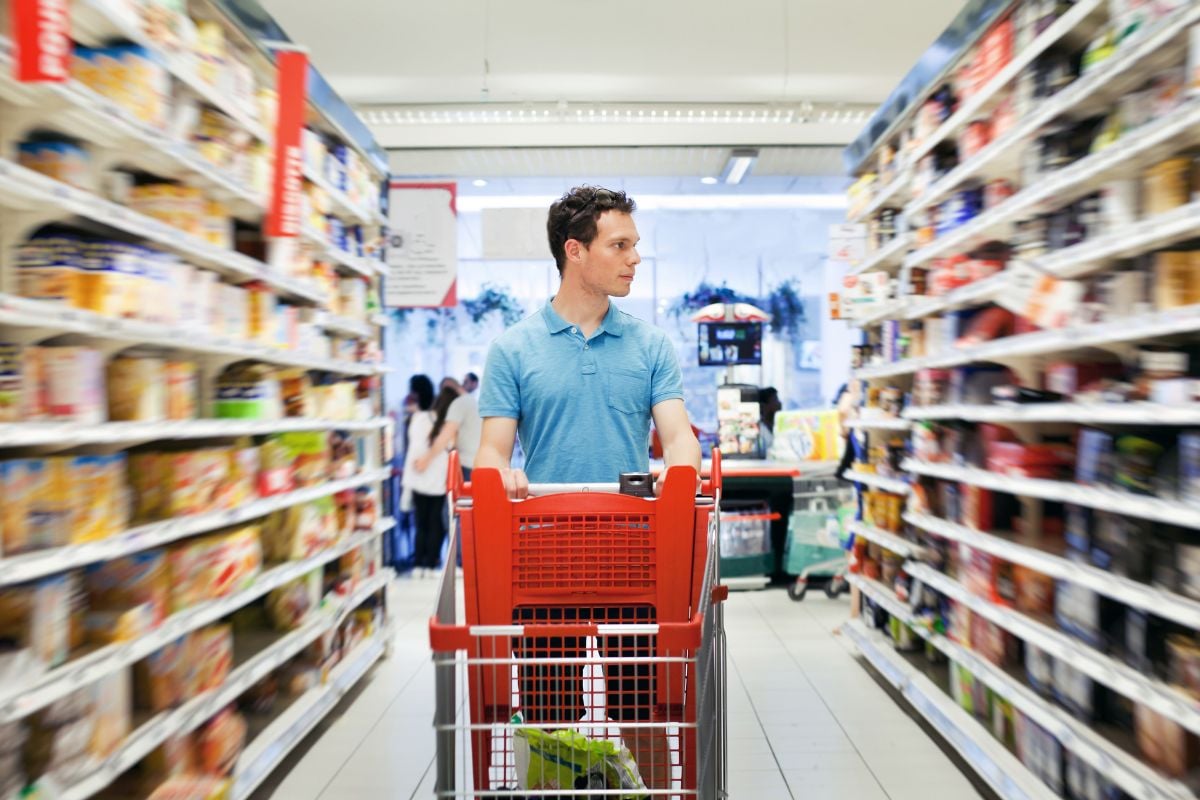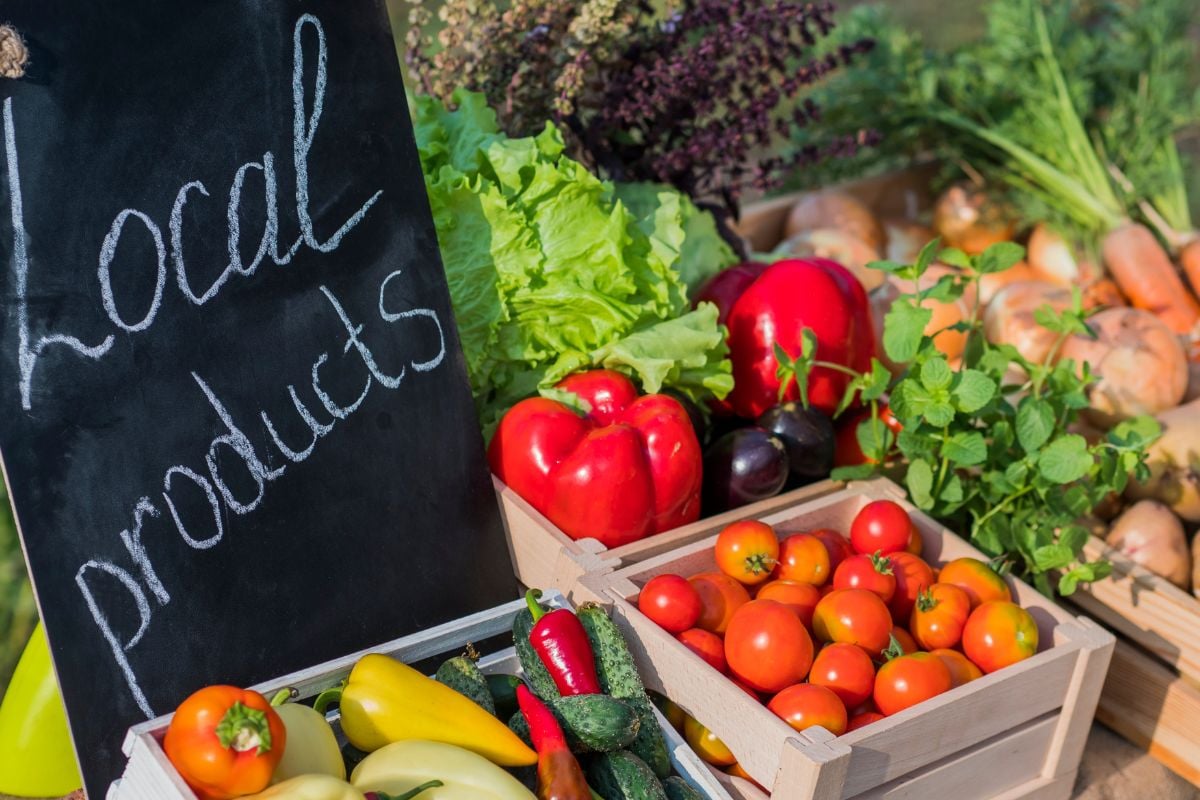While the European food distribution sector is extensive and complex, it is still predominantly controlled by a relatively small group of retailers.
Currently, brands like Lidl, Aldi, Tesco, Edeka, Carrefour, Rewe, Leclerc, Mercadona, Intermarché, and Kaufland account for nearly one-third of sales in Europe.
Given their significance and distinctiveness, the way these retailers evolve and expand will have a pivotal role in shaping the future of mass distribution in Europe.
This article delves into the prospects of the European food distribution sector up to the year 2027, with the exclusion of retailers in Ukraine and Russia due to the ongoing uncertainty in those markets.
Menu:
1 | Discounters take centre stage: Lidl & Aldi continue their expansion
2 | Will the Top 10 retailers stay the same in 2027?
3 | 3 retailers will occupy 78% of the new space introduced
4 | 5 key trends that will shape the strategies of the main European retailers
1. Discounters take centre stage: Lidl & Aldi continue their expansion
Between 2022 and 2027, the top 10 retail chains in the European grocery market are projected to generate an extra 114 billion euros in revenue.
Out of this turnover, comprising approximately 49%, the discount giants Lidl and Aldi will maintain their focus on expanding and modernising their store networks.
In addition, the German retailer Edeka is expected to increase its revenue by 11 billion euros, climbing from sixth place in 2022 to the fourth-largest European distributor in 2027. This growth will be driven by its supermarket brands and discount stores.
Not far behind, Tesco, Leclerc, Mercadona, Intermarché, and Kaufland collectively are expected to generate nearly 29 billion euros in additional sales. Mercadona is also poised for substantial growth, elevating it to the eighth position among European retailers by 2027.
1.1. Lidl's expansion strategy
Forecasts suggest that Lidl is expected to further increase its market share in most of its existing markets, maintaining its reputation as the leading discounter for value-conscious shoppers. Furthermore, no other retailer is expected to match its scale in the European sector, making it increasingly attractive to suppliers.
Following years of rapid expansion, the retailer is expected to shift its focus towards enhancing operating margins and investing in its supply chain network to ensure sustained profitability.
Additionally, the robust "Lidl Plus" loyalty program is expected to provide the company with valuable and precise customer data, enabling personalised offers and continued expansion of in-store product assortments.
1.2. Aldi's expansion strategy
Aldi is set to prioritise the rapid expansion of its real estate portfolio, with a focus on developing stores in central and densely populated urban locations to tap into new customer bases.
This growth trajectory is expected to be faster in recently entered markets like Italy, while more mature markets such as Germany will experience a more gradual pace of expansion.
Furthermore, Aldi will persist in its digital transformation journey, exploring innovative in-store solutions. Currently, both Aldi Nord and Aldi Sud are testing concepts like cashier-free stores and self-scanning, although widespread implementation of these technologies remains uncertain.
2. Will the Top 10 retailers stay the same in 2027?
At present, the food distribution landscape is dominated by 10 major players: Lidl, Aldi, Rewe, Edeka, Tesco, Carrefour, Leclerc, Mercadona, Intermarché, and Kaufland. These giants are projected to amass a total revenue exceeding 693 billion euros by 2027, thus preserving their market dominance, with a collective representation of 45% of all new retail food sales anticipated in the region between 2022 and 2027.
Furthermore, Europe's top 10 food retailers are expected to open nearly 4,500 new stores over the next five years, reaching a cumulative tally of 72,000 stores in operation by 2027.
2.1. Different network strategies
Nonetheless, beneath the growth statistics, big differences emerge in the network strategies being employed:
-
Leclerc, Kaufland, and Intermarché are poised to direct their efforts not towards extensive expansion, but rather towards revamping their existing stores and aligning them with novel, efficient concepts, including sustainability-focused stores.
-
In stark contrast, Lidl and Aldi are set to sustain the expansion of their retail networks, collectively contributing to nearly 60% of the forthcoming store openings among the top 10 retailers over the next half-decade.
-
Carrefour and Rewe also intend to prioritise the strategic expansion of their store networks. Carrefour will concentrate on fortifying its convenience store network, while Rewe will diversify across multiple channels, encompassing supermarkets, convenience stores, and discount outlets.
- Mercadona, on the other hand, anticipates further store openings, particularly within the Portuguese market, as part of its strategy to bolster its presence in major urban centres.
2.2. Different store types
Except for Lidl, Aldi, Mercadona, and Kaufland, the top ten European retailers will manage multifaceted retail networks. The average store size will therefore vary considerably from one network to another:
-
Leclerc, in contrast to other top 10 retailers, is anticipated to maintain a relatively compact store network. Nevertheless, the presence of a well-established hypermarket network will allow it to maintain the largest average store size. Kaufland is poised to exclusively operate hypermarket formats within its portfolio.
-
According to projections, Intermarché will sustain a network predominantly comprised of supermarkets, a pattern mirrored by Tesco and Carrefour. The average store size within these networks will be influenced by their robust convenience store segments.
-
The average store size for Lidl, Aldi, and Mercadona is projected to expand in the ensuing years. These brands will endeavour to provide more extensive assortments, with Mercadona leading the charge.

3. Three retailers will occupy 78% of the new space introduced
Projections suggest that Europe's top 10 food retailers will introduce 5.4 million square metres of new retail space in the coming five years.
Nonetheless, this expansion will be primarily led by three brands:
-
Lidl is spearheading the effort with 37% of the new retail spaces. This growth can be attributed to the establishment of larger stores, which will complement the ongoing renovations and expansions undertaken by Lidl in its existing outlets.
-
Aldi and Rewe are expected to follow a similar trajectory, contributing 23% and 18%, respectively.
Although Carrefour anticipates opening 738 stores, the incremental space will be more modest compared to other top 10 retailers, mainly comprised of smaller convenience stores.
4. The 5 key trends that will shape the strategies of the main European retailers
4.1. Deliver greater value
While value extends beyond price, competitive pricing remains crucial in a European market witnessing robust growth in discount retailers.
To distinguish themselves, many retailers must provide additional value to consumers.
Sustainable development emerges as a pivotal concern, resonating with increasingly environmentally conscious consumers and creating avenues for distributors to explore. These avenues include transparent communication, expanding plant-based product lines, promoting healthier and eco-friendly products, and more.
4.2. Strengthen the offer of local and seasonal products
Adhering to consumer preferences for locally sourced products can yield significant cost savings for retailers within their supply chains.
Local items can be transported to stores more efficiently, lowering transportation and logistics expenses. This shortened journey also contributes to decreased spoilage and waste, as products typically maintain their freshness for extended periods.
This approach not only aligns with ethical values but also offers economic advantages, benefiting both retailers and the environment.

4.3. Rethinking omnichannel
While retailers have traditionally worked to meet evolving consumer demands by implementing omnichannel strategies, in the future, they will need to shift their focus towards enhancing user journeys and experiences across these diverse channels, rather than merely expanding their number.
4.4. The importance of efficiency
As cost pressures continue to rise, retailers will seek ways to streamline their operations and reduce inefficiencies. This will involve the gradual integration of new technologies into their supply chains.
Blockchain, artificial intelligence, and big data are among the promising technologies that will enhance operational visibility and support more informed strategic decision-making.
4.5. Do better for the planet
Consumers are placing growing importance on environmental issues and their health, which requires the food sector to assume its responsibilities and actively contribute to creating a better world for everyone.
To address these concerns, retailers will continue to adopt measures to reduce the carbon footprint of their operations by:
-
Establishing partnerships with local suppliers to source raw materials.
-
Prioritising sustainable transportation methods for goods delivery.
-
Employing recyclable and reusable packaging for transporting goods.
-
Optimising the utilisation of renewable energy sources to decrease greenhouse gas emissions in their supply chain.
Simultaneously, it appears that retailers will increasingly prioritise enhancing consumer awareness by offering more transparent information about the origins of the products they sell.
Conclusion
In conclusion, the European food retail landscape in 2027 will continue to be shaped by a select group of dominant retailers:
Lidl, Aldi, Tesco, Edeka, Carrefour, Rewe, Leclerc, Mercadona, Intermarché, and Kaufland collectively hold a substantial share of sales in Europe. Their strategies, including expansion, store network modernisation, and own brand diversification, will significantly influence the future of the retail industry.
Consumer awareness regarding environmental and health concerns will underpin these strategies, driving retailers to address these issues.
Furthermore, the integration of technology, such as blockchain and artificial intelligence, is expected to enhance operational efficiency within the retail sector.
In summary, the European food distribution sector is evolving rapidly, and success will be reserved for those retailers capable of adapting to emerging trends and demonstrating innovation in this ever-changing industry.
Our teams are available to assist you and ensure a smooth transition towards making the change. Contact us today!



